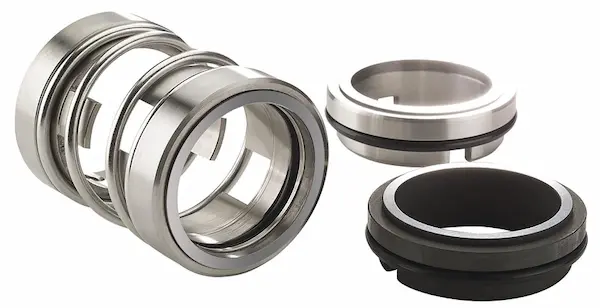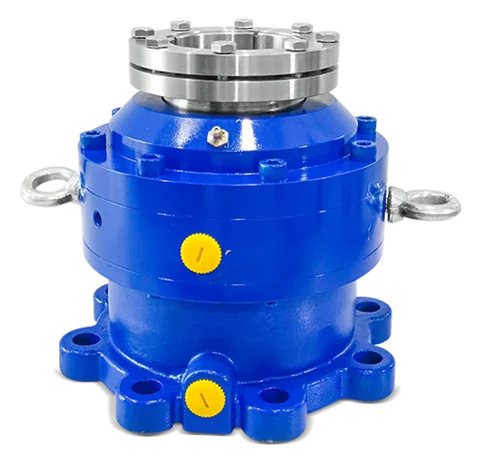Posted At: Apr 05, 2025 - 1,620 Views

How Do You Know If Your Fuel Pump Seal Needs Replacement?
Introduction
Your vehicle's fuel pump plays a crucial role in delivering fuel from the tank to the engine at the correct pressure. But one of the most overlooked components in this system is the fuel pump seal. While small in size, this seal is responsible for preventing fuel leaks and maintaining pressure within the system. When the seal fails, it can cause performance issues, increase fuel consumption, and even become a safety hazard.
So, how do you know if your fuel pump seal needs replacement? Let’s break it down.
What Is a Fuel Pump Seal?
The fuel pump seal is a rubber or elastomeric component that seals the gap between the rotating shaft of the fuel pump and the pump housing. Its main job is to prevent fuel from leaking out and to keep air or contaminants from entering the system. Over time, this seal can degrade due to heat, pressure, and fuel composition—leading to leaks or pressure loss.
Common Signs of a Bad Fuel Pump Seal
1. Visible Fuel Leaks
If you notice puddles of fuel beneath your vehicle or around the pump housing, it’s likely due to a leaking fuel pump seal. This is one of the most immediate signs that something’s wrong.
2. Poor Engine Performance
A damaged seal may result in inconsistent fuel pressure, leading to rough idling, stalling, or difficulty starting the engine.
3. Strong Smell of Fuel
If you catch a persistent gasoline odor around your vehicle, especially near the fuel tank or engine bay, a fuel pump leak may be the cause.
4. Decreased Fuel Efficiency
Leaking seals mean fuel isn’t being used efficiently. If you find yourself refueling more often than usual, it’s time to inspect the seal.
5. Warning Lights
Some modern vehicles are equipped with fuel system sensors. A damaged seal may trigger the check engine light or other fuel-related warning indicators.
Causes of Fuel Pump Seal Failure
Heat and Pressure: Constant exposure to high temperatures and fuel pressure can cause the seal to harden or crack.
Contaminated Fuel: Dirt and debris in fuel can wear down the seal surface over time.
Age and Wear: Like any rubber component, seals degrade with time and usage.
Poor Installation: Improper mechanical seal fitting can lead to early seal failure.
When Should You Replace the Fuel Pump Seal?
You should consider fuel pump seal replacement if you notice any of the symptoms mentioned above. Regular inspection during routine maintenance is also recommended, especially if your vehicle has logged high mileage or has a history of fuel system issues.
How to Replace a Fuel Pump Seal
Relieve Fuel System Pressure: Always begin by relieving the pressure in the fuel system.
Disconnect Battery: Prevent any accidental sparks or electrical issues.
Access the Fuel Pump: This usually involves removing the fuel tank or accessing it through a service port.
Remove the Old Seal: Carefully remove the pump assembly and inspect the seal for damage.
Install New Seal: Use a high-quality, compatible seal and ensure it's fitted securely.
Reassemble and Test: Reinstall everything and test for leaks or pressure irregularities.
Importance of Timely Replacement
Delaying the replacement of a faulty fuel pump seal can lead to:
- Risk of fire from fuel leaks
- Engine misfires or stalling
- Higher repair costs down the line
- Decreased engine efficiency
Timely replacement ensures smooth operation, better fuel economy, and vehicle safety.
Conclusion
The fuel pump seal may seem like a small part, but it plays a vital role in your vehicle’s performance and safety. Understanding the signs of a bad fuel pump seal can help you act quickly and avoid major issues. If you suspect your seal is worn out, don’t wait—get it inspected and replaced to ensure optimal fuel system maintenance.
Need Help with Installation?
If you need to know how to install pump mechanical seals for your pump, please go through our installation blog and do it perfectly.
Frequently Asking Questions
1. What are the symptoms of a bad fuel pump seal?
Common symptoms include fuel leaks, fuel odor, poor engine performance, decreased fuel efficiency, and warning lights.
2. Can I drive with a leaking fuel pump seal?
It’s not recommended. Fuel leaks pose a serious fire risk and can affect engine performance.
3. How long does a fuel pump seal last?
Typically, seals last 60,000–100,000 km but can degrade faster under harsh conditions.
4. Is replacing the fuel pump seal expensive?
The cost is usually affordable, but it depends on the vehicle model and labor charges. DIY replacement may reduce the cost.
5. Can fuel pump seal failure damage the engine?
Yes, a damaged seal can cause fuel delivery issues that lead to engine misfires or even long-term damage.


